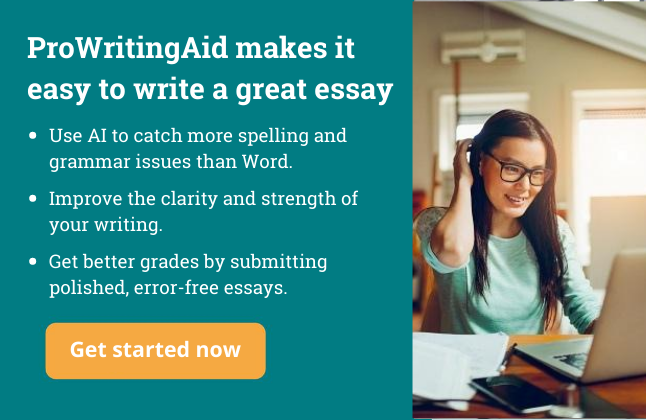
Writing essays can be overwhelming for many students. But crafting a strong outline before you start writing is a surefire way to make the process much easier.
If you’ve never written an outline, where do you start? You can think of your essay as having six main parts:
- Introduction
- Thesis statement
- Major Point 1
- Major Point 2
- Major Point 3
- Conclusion
We’ll go through each of these to explain how to put your outline together in a way that is simple and makes sense. But here’s a hint: we aren’t going to work on these in order!
Thesis Statement
The first thing you want to write for your outline is your thesis statement. This is typically one or two sentences, and it acts as the GPS for your entire essay. The thesis statement tells what your essay will be about. It defines your stance and lets your reader know what your major points are.
Without a strong thesis statement, even an outline can’t help you write a cohesive essay. Everything in your essay must support your thesis statement.
For more information about how to craft a strong thesis statement, check out this article on introductions.
Major Points
Some people like to plan their introduction first. But I think it’s easier to plan the meat of my essay before the introduction. Usually, this will give me some good ideas to make my introduction compelling.
In general, your essay will have three major points. This isn’t a hard and fast rule. If you only have two very strong points to support your thesis, you might not need a third one. Sometimes, you might have four or five major points, and that’s okay, too.
Decide your major points that support your thesis. You can craft your topic sentences and place those in your outline. This will save you some writing later. Otherwise, just list the topic in your outline.
Each major point will have sub-points. This is the evidence to support each point. It might be research, quotes, or anecdotes. How many sub-points you have will vary depending on your topic, the essay length, and the individual major point. Keep in mind that the major points do not have to have the exact same number of sub-points. Some major points will be stronger than others.
How do you decide which order your major points will go? There are different schools of thought on this.
Some writers or teachers will tell you to write your strongest, most compelling argument as the first point, followed by the second strongest and least strong. Other people will say it’s better to get more compelling as you write, so start with your least strong argument.
I am in the camp that uses the sandwich method. Use your second-most compelling argument first and your strongest last. Put your weakest or shortest point in the middle. This way you start strong and end with a bang!
However, I do recommend that if your essay is timed writing, like on the AP test, start with your strongest point in case you run out of time.
Introduction
Once you have the meat of your essay planned out, you can plan your introduction. The first thing to plan is how you will open your essay. Will you use a quote or a shocking fact? Perhaps you’ll use a rhetorical question. Decide how you will hook your readers.
Then plan your background information or context. This provides a little more information about your topic before your thesis. For example, in an essay about the lasting effects of the New Deal, your context will tell readers what the New Deal is and how it was put in place. In a persuasive essay about why the minimum wage should be raised, your context will state what the minimum wage is and how long it’s been at that rate.

Conclusion
Finally, you can plan your conclusion. A good conclusion restates the thesis and ties all of your points together. And it ends with something that will make the reader think and feel satisfied that the question was answered. It might provide a call-to-action, ask an evocative question, or offer a prediction about the future.
The most important thing to remember for the conclusion is not to introduce any new information. Conclusions don’t have to be long, either. Three to four sentences is a good rule of thumb.
Outline Format
Here’s an outline format that you can use to plan your essay. Remember, start with your thesis statement! For each major point, you might have more than two pieces of evidence. That’s fine! Just add more sub-points on your outline.
Introduction
- Thesis statement
- Compelling hook
- Context or background information
Major Point 1
- Topic sentence
- First piece of evidence: Fact, data, example, or anecdote; Commentary (how this supports your point, what it means)
- Second piece of evidence: Fact, data, example, or anecdote; Commentary
Major Point 2
- Topic sentence
- First piece of evidence: Fact, data, example, or anecdote; Commentary
- Second piece of evidence: Fact, data, example, or anecdote; Commentary
Major Point 3
- Topic sentence
- First piece of evidence: Fact, data, example, or anecdote; Commentary
- Second piece of evidence: Fact, data, example, or anecdote; Commentary
Conclusion
- Restate thesis
- Summarize points
- Compelling final thought
This outline is meant to be a starting place. You can add as much or as little detail as you like – whatever works for you! You can also work in any order you like. I always plan and write my introductions last, but you can plan it first.
Have you used an essay outline before? Let us know in the comments.
Want to improve your essay writing skills?
Use ProWritingAid!
Are your teachers always pulling you up on the same errors? Maybe your sentences are too long and your meaning is getting lost or you're using the same sentence starter over and over again.
ProWritingAid helps you catch these issues in your essay before you submit it.



